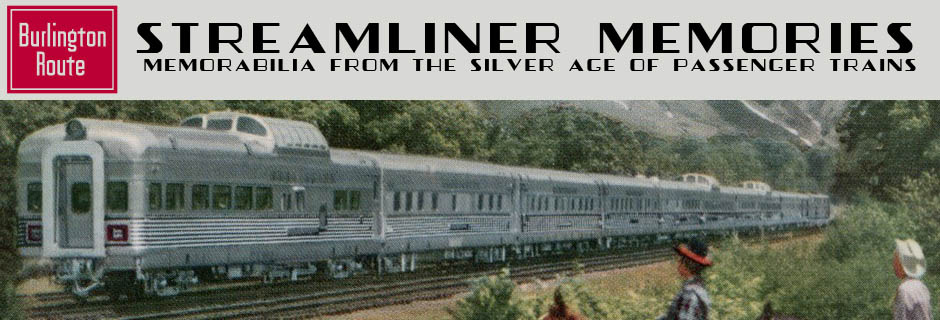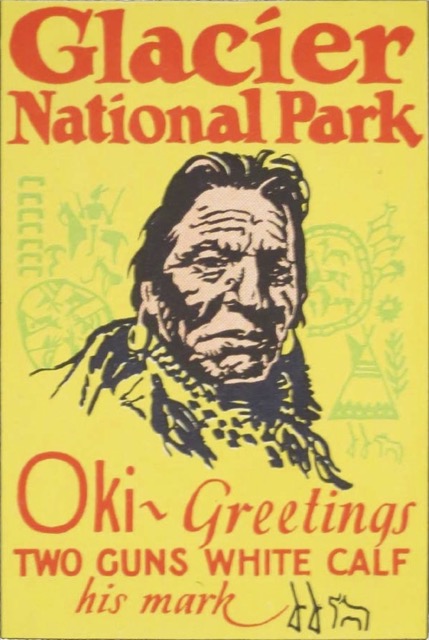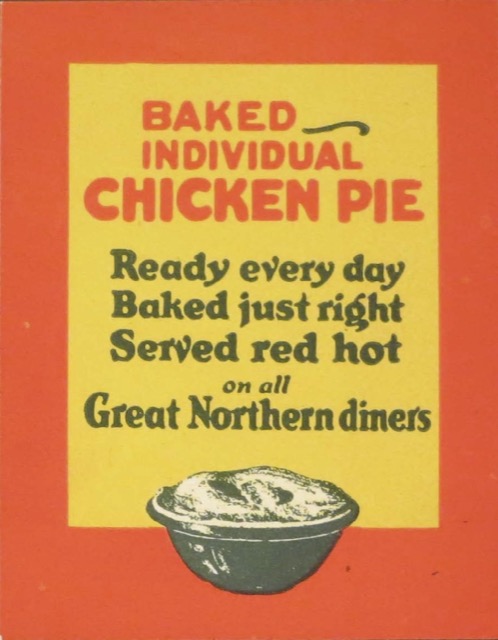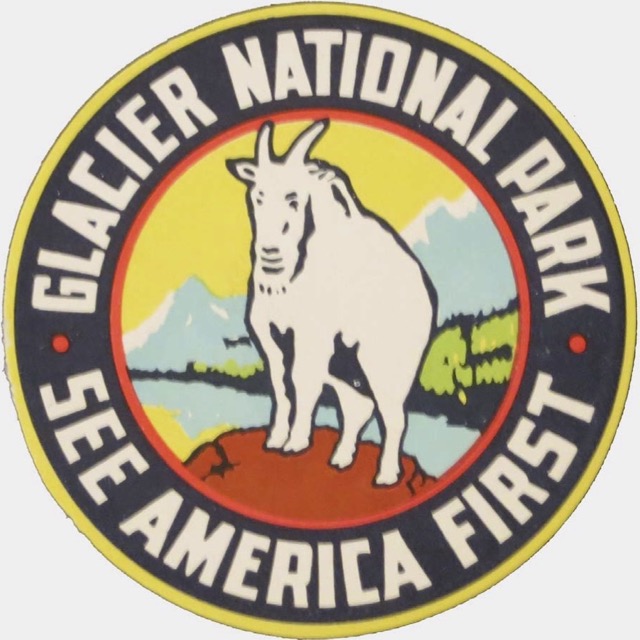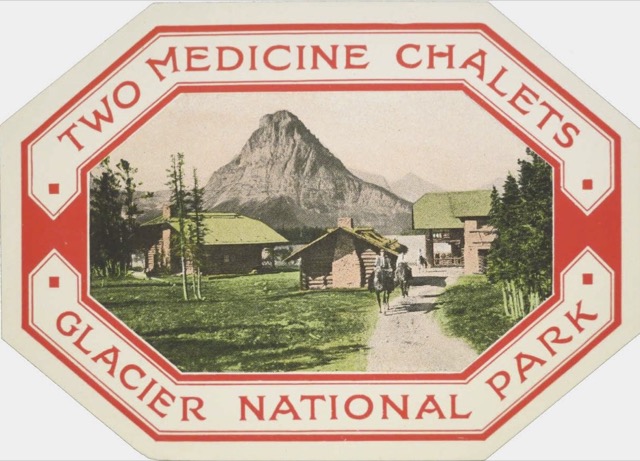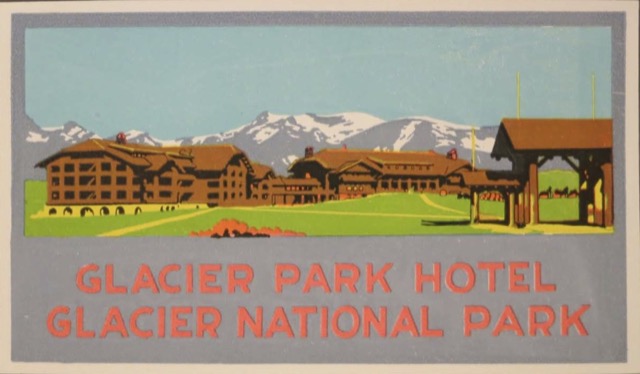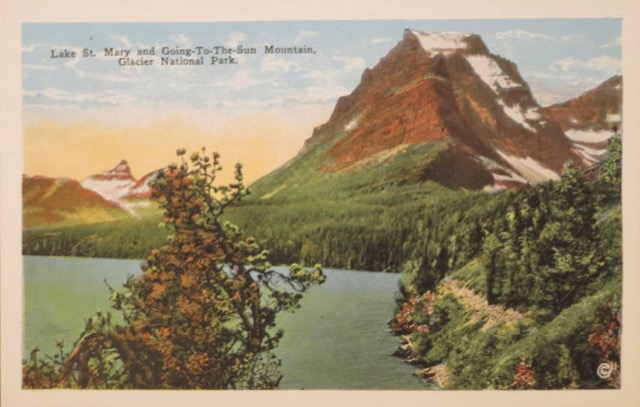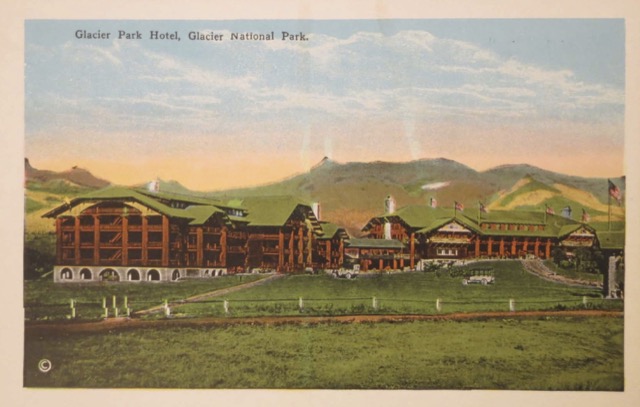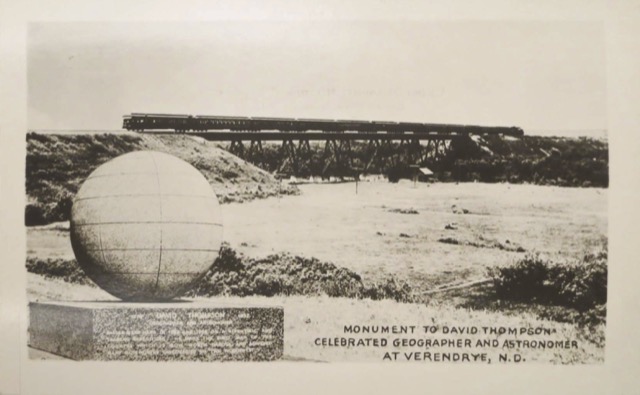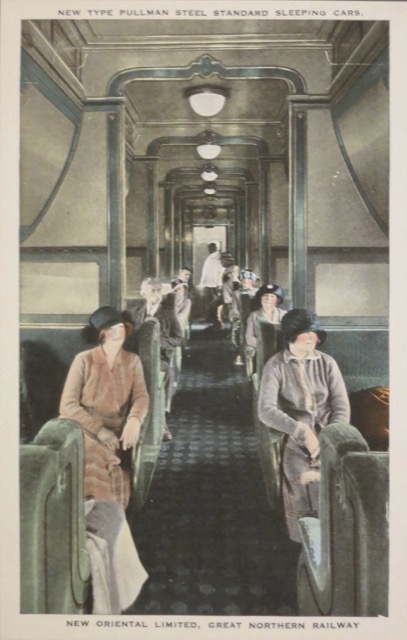With the introduction of the new Oriental Limited in 1924, Great Northern issued a series of postcards to help advertise the trains. Unlike most postcards, these did not include an address section, so had to be mailed in an envelope.
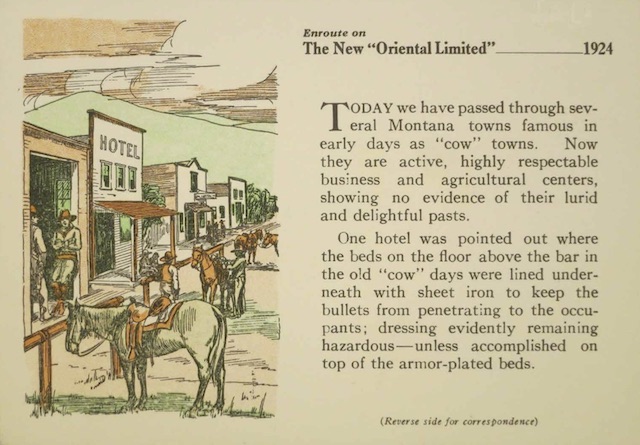 Click image to download a 213-KB PDF of this postcard.
Click image to download a 213-KB PDF of this postcard.
One side of the postcards reads like a travel log, informing the passengers, or their friends, where they have been on a particular part of the journey. On the other side, half the postcard has an interior illustration of the train — in this case the dining car — and the other half is blank for correspondence. Continue reading
